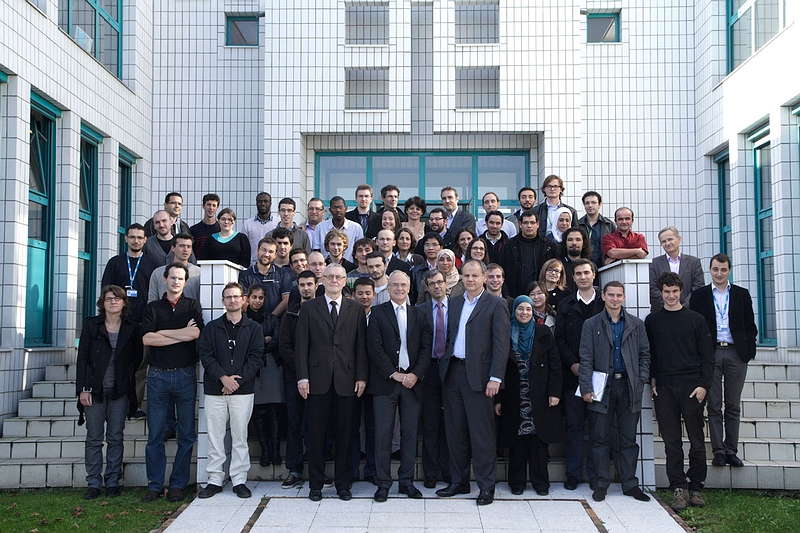
Learning from a day of exchanges, proof of the central importance to research of multidisciplinary teamwork in projects at the CSTB.
About a dozen doctoral students presented their ongoing research at an event for them on October 23. Bringing together disciplines as diverse as computer science, acoustics, biology and urban morphology, this one-day event stressed the importance of taking a systemic approach to addressing the challenges of sustainable development.
From buildings…
Interested in “risk mitigation” and the 20,315 annual victims of fire and smoke, Damien Larsson, doctoral student in the Safety, Structures and Fire Performance Department for the last year, is focusing on the uncertainties in fire simulation. He is particularly interested in the reliability of simulations based on computational fluid dynamics (CFD) of free and impactful plumes of smoke. One main goal: prepare recommendations for the sensible use of CFD, keeping in mind its strengths and limitations.
Rachid Ouaret wants to find ways of compensating for the lack of data on the quality of indoor air over long periods of time. His work will increase knowledge about the fluctuations of pollutants and their sources, thus developing predictive models for the short and medium-term quality of indoor air.
Although united by the primary concern with developing “sustainable buildings,” Emilie Fouque and Antoine Lefort have taken their theses in significantly different directions. Close to basic research, Emilie Fouque worked on free-living amoebae (FLA), which become reservoirs of pathogenic bacteria, such as Legionella. Overall, his work consists in using an innovative strategy to control these amoebae, which frequently appear in domestic hot water systems, in order to mitigate the associated hazards. More inspired by computer science, electricity, and the emergence of the smart grid, Antoine Lefort developed an algorithm to control all the facilities in housing. Adjustable to any existing building, this algorithm optimizes comfort and energy by predicting needs.
…to the sustainable city
Finally, Loeiz Bourdic, ended the event by considering the scale of the neighborhood and the city. Recognizing that the number of cities to be built in the next 30 years will equal the number built in the history of humanity, he focuses on the morphology and energy efficiency of the urban fabric. Specifically, Loeiz Bourdic's work looks at the structural and systemic energy laws of cities to determine monitoring, assessment and decision-support tools for urban policy development.
Risk mitigation, usages, health, comfort, digital tools, urban policy and scales of efficiency: The diversity and complexity of doctoral theses demonstrate that research on buildings is exceeding its traditional boundaries by calling on varied academic approaches and cross-cutting analyses.
“Fifty-five doctoral students are now working at the CSTB. About 25% of CSTB researchers completed their theses here.”
Hervé Charrue, director of Research and Development
Find out more:
- Read summaries of the work of 45 doctoral candidates:A year of doctoral research
- Roadmaps for 2011–2020 research were developed based on the scientific and technical priorities that shape CSTB research:Roadmaps for research through 2020
Event highlights in pictures
A year of doctoral research: Learning from a day with doctoral students on October 23, 2012.
